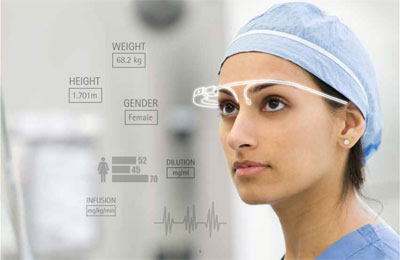
Wearables – consumer fad or business innovation?
CHICAGO, September 14, 2014
Are wearable technologies a consumer fad or a business phenomenon? Thanks to the buzz around Google Glass, the Pebble smartwatch and various fitness tracking devices, consumers have become more aware of the burgeoning technology, with some incorporating wearables into their daily lives.
However, there are much bigger opportunities for deploying wearable technologies, according to a new report released by Accenture Technology Labs, the dedicated technology research and development (R&D) organization within Accenture, a global a management consulting, technology services and outsourcing company.
In fact, enterprises have business cases that could save billions of dollars—especially for specific industries and certain types of workers, said the report.
Wearable displays will begin with companies, not consumers—with the first Fortune 500 production deployments starting this fall, it added.
Why? For starters, wearables can boost employee efficiency by providing real-time data access while freeing the hands to hold tools or equipment, the report said.
Wearable displays can also enable a powerful new level of video collaboration, for example, by connecting field workers with more experienced colleagues, who can then see exactly what the field worker is seeing. And wearables can make it faster and easier for enterprises to make business decisions, compressing the time between intention and action to literally seconds.
Enterprises will need to recognize the trade-offs that come with wearables and develop strategies to address them, the report pointed out.
Screen real estate is one consideration. Some tasks are better suited for desktops with large screens; others, for wearables with tiny screens that provide instant notifications, contextual information and unmatched portability. In addition, businesses will need to expand wireless networks to ensure Wi-Fi connectivity for remote workers. And they will need to mollify employee privacy concerns about being monitored.
Overall, these are minor obstacles in a major new wave of mobility—wearables are disruptive, transformative and here to stay. To surpass the competition, enterprises should begin now by testing the most promising use cases and determining which type of wearable works best for each situation.
Wearable technologies have a clear potential to disrupt every industry—including oil and gas, healthcare, media, retail, public service, warehouse, agriculture, construction and automotive—and also change how certain employees perform their jobs.
One universal option is video collaboration to enable “see-what-I-see” coaching. For instance, newly trained service technicians could contact their supervisor remotely to confirm how to fix a problem on the first visit to a customer’s home, thus helping maintain customer satisfaction levels.
Similarly, in a public service example, fire-fighters preparing to enter a building could use wearable displays to connect to the fire chief outside, who could then see through the fire-fighter’s field of vision to provide support or draw attention to a particular issue.
Another promising use of wearables is to speed the decision-making process at all levels. For instance, manufacturing companies could provide immersive wearable displays to shop floor workers.
As employees checked the machines, data could appear in the field of view. If a machine indicated a red status, an employee could access the machine schematic, pick up tools and fix the machine by following a step-by-step guide. As needed, the shop floor employee could also contact a supervisor for advice, who could then draw on the diagram using telestration.
Given the value proposition for enterprises, it is not surprising that industry analysts and other companies are predicting wearables will be big business. Gartner, Inc. forecasts that Google Glass and other smartglasses will make employees more efficient, adding more than $1 billion per year to company profits by 2017.
And APX Labs, maker of smartglass software, estimates there are approximately 40 million deskless workers in the US alone who could benefit from wearables, spanning healthcare, manufacturing, retail/wholesale, government, construction, transportation, resources, utilities and other industries.
Enterprises can begin by looking for appropriate use cases within their business that take advantage of the wearable form factor. A good starting point is tasks that consistently require deskless employees to work with their hands while referring to various data sources. It is important to test hypotheses of how the wearable display usage trumps existing tablet, smartphone or desktop applications in terms of feasibility, ease of implementation, impact and cost savings.
“Next, enterprises should evaluate which type of wearable display best solves the business problem instead of jumping to conclusions about the one to implement. It is important to build a demonstration and test assumptions with a few passionate stakeholders,” the report said.
“Top companies will experiment with what works and what does not, and then learn and iterate quickly.”
These proofs of concepts and pilots should factor in the key considerations above (user interface and experience, distraction, ergonomics, business process modification, IT infrastructure, data analytics and visualization, privacy/security) to ensure a complete and viable solution from the employee experience to the back-end systems, whether on the company’s premises or in the cloud.
Finally, enterprises should launch and scale the wearables solutions that deliver the best outcomes across the business. This effort may include allocating budget for wearables, such as hardware and application development; establishing governance across the business to ensure continuity; retraining staff to handle management of wearable devices and applications; hiring wearables expertise as needed; and leveraging external experts to develop or implement these strategies.
With these steps, you can put wearables to work in your enterprise now—for high performance today and well into the future, according to the Accenture Technology report. – TradeArabia News Service







